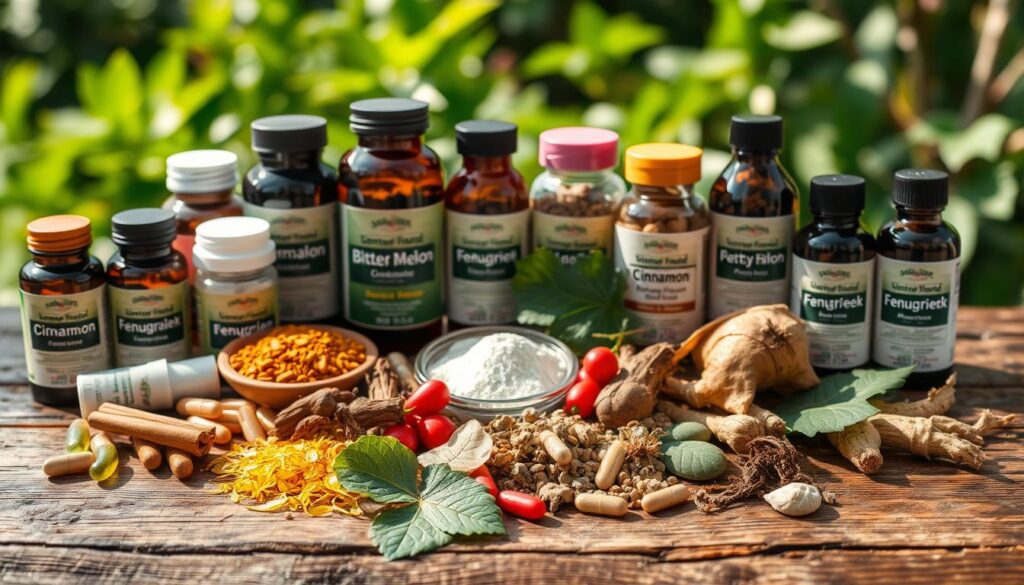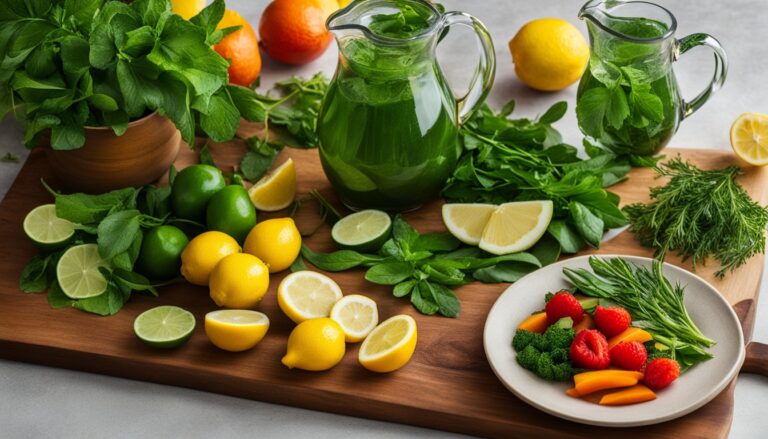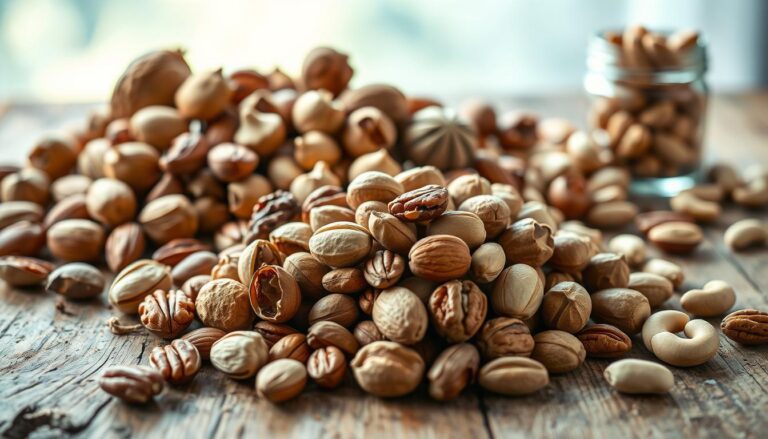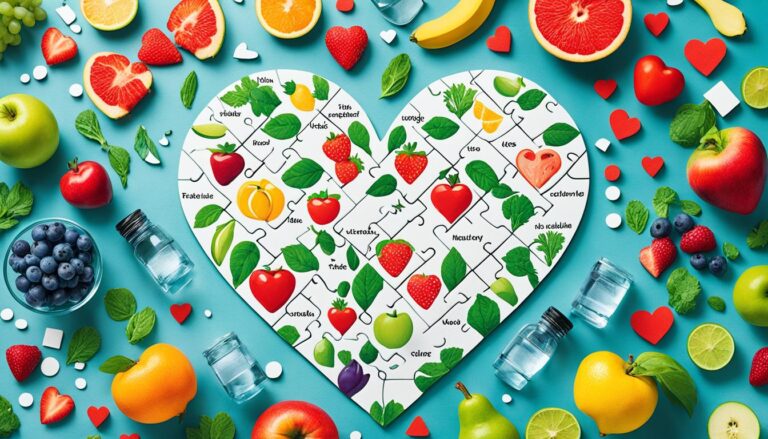Could ancient herbal remedies be the answer to today’s diabetes problems? With over 34 million Americans dealing with diabetes the search for diabetes natural treatments is on the rise.
Plants like garlic bitter melon, and fenugreek are being studied for their blood sugar control abilities. But how do they stack up against medicines?
Type 2 diabetes is now common in kids, making people look for safer ways to manage it. In 2020, the FDA recalled some metformin batches, showing the need for reliable treatments.
Around 60% of the world’s population uses plants for medicine with 72% of U.S. diabetes patients trying natural remedies. Yet, only 50% stick to their meds because of side effects like metformin’s diarrhea, which affects 62% of users.
Recent studies show cinnamon and bitter melon might help lower blood sugar. But more research is needed to confirm this. This article looks into how plants like fenugreek and holy basil could help, while stressing the importance of talking to a doctor first.
Key Takeaways
- Diabetes affects 10.5% of Americans, with costs exceeding $294 billion annually.
- Over 1,200 plant species are used globally for diabetes treatment, with fenugreek and aloe vera showing notable HbA1c reductions.
- Cinnamon and chromium supplements show promise in lowering fasting glucose, per 2020 reviews.
- 62% of U.S. patients use complementary therapies, but only 45% achieve adequate glycemic control with standard care.
- Risk of drug interactions exists always consult a healthcare provider before using herbal remedies.
Understanding Diabetes and the Role of Natural Remedies
Diabetes is a chronic disease that affects how our body uses glucose. It happens when our body can’t use insulin well. With 1 in 3 Americans at risk, it’s important to know about it. The World Health Organization says over 422 million people worldwide have diabetes, showing we need better ways to manage it.

Complementary and alternative medicine includes diverse practices not part of conventional healthcare systems according to the National Center for Complementary and Alternative Medicine.
Prevalence and Rising Concerns
Type 2 diabetes is the most common form, affecting 90% of cases. In the U.S. the cost is over $327 billion a year. This high cost makes people look for cheaper ways to manage diabetes, like plant-based diabetes remedies.
Why Natural Options Gain Attention
Many people turn to alternative medicine for diabetes because of drug side effects and high costs. Surveys show 30% of patients use both traditional and natural treatments.
Research suggests that some natural products like chromium might help with insulin, but more studies are needed. American ginseng has shown small benefits in lowering blood sugar, which is why it’s getting attention.
Science Behind Synergistic Care
- Cinnamon extracts may enhance insulin activity, aiding glucose uptake.
- Bitter melon studies report fasting glucose reductions in human trials.
- Anti-inflammatory herbs like turmeric’s curcumin may reduce metabolic inflammation.
While these options seem promising, the evidence is not all the same. Experts say it’s important to talk to a healthcare provider before trying them. This way, we can use these natural remedies safely and effectively.
The Science Behind Plant Based Diabetes Management
Natural supplements for blood sugar control use complex biological processes backed by years of research. Botanicals for managing diabetes target key steps in glucose metabolism. Phytochemicals like polyphenols and flavonoids slow down carbohydrate digestion and lower blood sugar spikes.
Studies show that compounds in bitter melon and cinnamon boost insulin secretion from pancreatic cells. This is similar to how synthetic drugs work.

Research shows garlic supplementation can lower HbA1c levels by 12% when used with standard treatments. This proves that garlic can work well with other diabetes treatments.
Botanicals fight oxidative stress at the cellular level. Turmeric, for example, contains curcumin, an antioxidant that fights free radicals. This helps prevent damage to blood vessels and nerves.
Animal studies also show that extracts from Acacia arabica and Aloe vera protect the liver and improve vascular health. This is by lowering lipid peroxidation markers.
- Polyphenols block glucose absorption in the intestines
- Alkaloids inhibit liver glucose production
- Terpenoids enhance insulin receptor sensitivity
- Antioxidants reduce inflammation driving insulin resistance
More than 800 plant species have shown antidiabetic activity in lab tests. Clinical trials have confirmed that fenugreek seeds can lower fasting glucose by 28-30% in humans. Botanicals also help with lipid problems: Andrographis paniculata can lower triglycerides by 49%, sometimes better than metformin.
These compounds work well with dietary fiber to slow down carbohydrate absorption. They also help balance the gut microbiota.
What Are the Medicinal Plants for Diabetes? A Comprehensive Overview
For thousands of years, plants have helped people with diabetes. Today, science backs up many of these natural remedies. The World Health Organization lists over 21,000 medicinal plants, with 1,200 studied for diabetes.

Evidence-Based Botanical Solutions for Blood Sugar Control
- Amaryllidaceae 14.28% prevalence includes plants like Nerium oleander, studied for insulin-like activity.
- Psyllium and Fenugreek reduce HbA1c by up to 0.85%, per clinical trials.
- Cinnamon lowers fasting plasma glucose by -1.07 mmol/L, per meta-analyses.
Traditional Uses Across Different Cultures
In Africa, 52% of diabetic patients use herbal remedies like Moringa oleifera. In India, 68% of practitioners prescribe Azadirachta indica. Moroccan healers use 150 plant species, including Artemisia herba-alba and Ziziphus jujuba.
Studies in Nigeria and Morocco found 137 species that work well in lab or clinical studies.
Modern Research Supporting Ancient Wisdom
Studies show that Allium sativum garlic improves insulin sensitivity. A 2020 review of 39 studies found 21 plants that help control blood sugar. The link between traditional use and modern science is strong, with an r=0.70 relationship.
Cultural practices and lab results increasingly align, proving phytochemicals like those in Gymnema sylvestre can modulate glucose metabolism.
Modern research has found 31 plant families that work well for diabetes. They help in many ways, from blocking sugar absorption to protecting the pancreas. This shows how old remedies and new science can work together.
Cinnamon A Powerful Spice for Glycemic Control
Cinnamon is a key player in diabetes natural treatments. It helps control blood sugar levels. Studies show it boosts insulin activity and keeps glucose levels stable. There are two main types: Ceylon and Cassia. Ceylon has less coumarin, which is safer for long-term use.
Effective natural supplements for blood sugar control often use water-soluble extracts. These include Cinnulin PF or CinnSulin. They focus on the active parts without harmful fats. Research suggests 1-6 grams a day can lower fasting glucose levels.
A 2003 study by Khan et al. found cinnamon reduced fasting glucose by 18-29% in type 2 diabetes patients. A 2020 meta-analysis also showed higher doses ≥2 g/day can lower blood pressure and improve lipids.
- Dosage: 0.5–6 g daily, depending on extract type
- Preparation: Supplements capsules, added to meals, or brewed as tea
- Key Component: Water-soluble type-A polymers enhance insulin signaling
While cinnamon’s effects on insulin are clear, results can vary. The European Food Safety Authority suggests a limit of 0.1 mg/kg of body weight for coumarin.
Always talk to a healthcare provider before adding high doses to your diabetes treatment. Choose extracts that are pure and have the right amount of active compounds for the best results.
Bitter Melon Nature’s Insulin Mimicker
Bitter melon Momordica charantia, a tropical vine fruit, has been used for centuries in Ayurveda and Chinese medicine. Its bitter taste hides its ability to help with diabetes. It has compounds that work like insulin to manage blood sugar.
- Charantin: A phytochemical that enhances glucose uptake in cells.
- Polypeptide-P: A plant-based insulin mimic that lowers blood sugar.
- Vicine: A flavonoid that supports pancreatic insulin secretion.
A 2020 study found that 90 people taking bitter melon extract had their fasting glucose drop by 11% in 12 weeks. But, herbal remedies for diabetes like this need careful use. HbA1c levels didn’t change, showing the need for more treatments together.

It can be used in different ways: fresh, juiced, or as a diabetes herbal supplement. The amount to take is usually 2–4 grams of dried powder a day. But, always talk to a doctor first. Pregnant women and those on diabetes meds should be careful because of the risk of low blood sugar.
Bitter melon’s dual action on insulin pathways offers promise, yet standardized research on long-term efficacy remains limited.
Bitter melon is not a cure on its own. But, it can be a helpful part of a holistic approach to managing diabetes. It fits with evidence-based care when used wisely in treatment plans.
Fenugreek Gymnema and Other Powerful Herbs for Blood Sugar Regulation
Herbs like fenugreek and gymnema sylvestre help control blood sugar levels. They are being studied to see how they can help with diabetes. These natural remedies may help with insulin resistance and inflammation.

Fenugreek seeds have fiber that slows down sugar absorption. A 2015 study found that taking 5 grams twice a day helped prevent diabetes in some people. It also helps with insulin levels and cholesterol.
Gymnema sylvestre has gymnemic acids that block sugar absorption. A 2019 review showed it lowered blood sugar levels in 65 patients. It also improved cholesterol and weight.
Turmeric’s curcumin fights inflammation that can lead to insulin resistance. Studies suggest it might be as good as metformin at certain doses. Ginger also helps by reducing blood sugar spikes after meals, as shown in a 2017 trial.
- Boerhavia diffusa increases hexokinase activity, critical for glucose metabolism
- Capparis decidua fruit extracts lower blood sugar in diabetic animal models
- Caesalpinia bonducella shows efficacy in chronic type 2 diabetes trials
While these herbs are promising, the FDA doesn’t regulate them. It’s important to choose trusted brands. Always talk to a doctor before adding these herbs to your treatment plan. Research is ongoing to find how these herbs work with modern treatments.
How to Incorporate Medicinal Plants into Your Daily Diabetes Management Routine
Adding healing plants for diabetes to your routine needs planning. First, talk to a healthcare provider. This is important to avoid problems with medicines like metformin. The FDA recalled some extended-release metformin in 2020.
Over 1,200 plant species are used worldwide for diabetes. But, only a few have strong evidence to support their use.
| Plant | HbA1c Reduction |
|---|---|
| Aloe vera | −0.99% |
| Psyllium | −0.97% |
| Fenugreek | −0.85% |
Choose how you take the plants based on what you like:
- Brew teas from fenugreek seeds or cinnamon Cinnamomum spp.
- Take standardized capsules of bitter melon Momordica charantia or Gymnema sylvestre
- Add turmeric Curcuma longa to meals for anti-inflammatory benefits
When you take bitter melon extracts, do it with meals. This helps your body absorb it better. Keep herbs in airtight containers away from light. Use a log to track your blood sugar levels weekly.
More than 45% of U.S. adults with type 2 diabetes don’t meet their blood sugar goals. Botanicals can help when used carefully.
Always choose FDA-approved treatments first. Look for guidance from trusted brands like Nature’s Way or NOW Foods. If you experience stomach problems, stop taking the supplement. Mild side effects like diarrhea are common.
Potential Interactions Between Herbal Remedies and Diabetes Medications
Managing diabetes with alternative medicine for diabetes needs careful attention to how diabetes herbal supplements and prescription drugs interact.
Mixing botanicals with drugs like insulin or metformin can change how well they work or cause bad side effects. For example, bitter melon and gymnema might make hypoglycemia risks worse when used with sulfonylureas. Garlic can make metformin work better, so you might need to adjust your dosage.
Always put safety first when adding herbal therapies to your treatment plan.
Safety Considerations When Using Natural Supplements
- Check for herb-drug interactions: diabetes herbal supplements like fenugreek or turmeric might affect blood thinners or blood pressure meds
- Go for FDA-registered brands: Unchecked products could have harmful substances or uneven dosages
- Watch for unexpected side effects: Keep an eye on your blood sugar levels when making changes
When to Consult Your Healthcare Provider
See a doctor before starting herbal treatments if you:
- Are on anticoagulants, statins, or other prescription drugs
- Have kidney or liver problems that affect how drugs are broken down
- Feel dizzy, have a fast heartbeat, or experience unexplained low blood sugar
Monitoring Your Response to Botanical Treatments
Keep track of how you’re doing by:
- Logging your blood sugar levels to spot patterns
- Getting regular A1C tests to check long-term control
- Doing liver function tests if you’re using high doses of extracts
Write down all the herbal remedies you’re using in your medical records. This helps your healthcare team give you the best care.
Remember, alternative medicine for diabetes should work with your prescribed treatments, not replace them. The WHO says 72.8% of diabetics use herbal remedies, but 40% don’t tell their doctors. Talking openly with your healthcare provider is key to safely using these treatments together.
Diet Exercise and Lifestyle Factors That Enhance the Effectiveness of Medicinal Plants
Managing diabetes involves more than just natural supplements. It also means making smart lifestyle choices. These choices boost the power of herbal remedies, helping your body better handle sugar. Eating right and staying active work together to improve how your body uses insulin.
Lifestyle changes can reduce diabetes-related costs by 30% through preventive measures and improved treatment outcomes.
Creating a Holistic Approach to Diabetes Management
Exercise, like walking 150 minutes a week, makes your body more sensitive to insulin. This helps herbs like bitter melon work better. Getting enough sleep and managing stress also helps keep blood sugar levels stable.
Studies show that combining these habits can cut down on expensive medicines. The U.S. Centers for Disease Control and Prevention CDC suggests adding these to your daily routine for lasting benefits.
Synergistic Foods That Amplify Herbal Remedies’ Benefits
- Fiber-rich foods beans, vegetables paired with fenugreek seeds slow glucose absorption
- Omega-3 sources salmon, walnuts combined with turmeric boost anti-inflammatory effects
- Leafy greens and cruciferous vegetables enhance antioxidant activity of herbs like gymnema sylvestre
Research shows that bitter melon works better with high-fiber foods. Flaxseed and cinnamon together can also lower blood sugar spikes by 15-20% in some cases.
The Importance of Consistency in Natural Diabetes Treatment
Herbal treatments need to be used regularly for the best results. For example, fenugreek’s effects on blood sugar are best seen after 8 weeks of daily use. Irregular use or skipping workouts can lessen these benefits.
Sticking to both herbal treatments and healthy habits increases your chances of reaching your A1C goals. It also lowers the risk of heart problems.
Real Success Stories Americans Managing Diabetes with Plant Based Approaches
In the U.S., people are changing how they manage diabetes with plant-based diabetes remedies. A 62-year-old from Texas for example, cut their HbA1c from 8.9% to 6.2% in six months. They used cinnamon and bitter melon supplements. This matches the Adventist Health Study-2, which found vegans have 77% less diabetes risk than nonvegetarians.
After switching to a plant-based diet, my fasting glucose dropped from 180 to 110 mg/dL in three months said a participant in a 2021 clinical trial. The healing plants for diabetes like fenugreek and turmeric became vital to my protocol.
Studies show real results. The BROAD study found a 4.4 BMI reduction in the plant-based group, compared to 0.4 in controls. Another trial showed vegan dieters lost 6.5kg over 22 weeks, double the conventional group’s results. These findings are similar to the Diabetes Prevention Program’s 71% risk reduction through lifestyle changes.
While results vary, the data is promising. The Harvard cohort found that reducing meat intake lowers diabetes risk by 48%. Even small changes, like choosing lentils over processed meats, can reduce risk by 19%. Over 200,000 participants in a meta-analysis saw a 23% lower risk by following plant-focused diets.
These stories highlight the importance of personalized plans under medical guidance. Combining healing plants for diabetes with fiber-rich diets targeting 40g/day and exercise has synergistic effects. Many participants reduced medications as insulin resistance improved some even stopped metformin after 12 weeks.
These outcomes show the promise of plant-based diabetes remedies when used thoughtfully. While results depend on adherence and medical oversight, these real-world examples align with clinical evidence.
Conclusion Integrating Medicinal Plants into Your Complete Diabetes Care Plan
Medicinal plants can help manage diabetes when used with traditional treatments. Over 422 million people worldwide have diabetes, and this number is expected to grow. Plants like cinnamon and bitter melon can improve insulin sensitivity and blood sugar levels, research shows.
But, these plants should not replace prescribed medicines. The FDA doesn’t regulate herbal supplements, so their quality can vary. It’s important to check the purity and dosage of these products and talk to a healthcare provider to avoid any harmful interactions.
In Thailand, 64% of cancer patients and 38.4% of those with chronic diseases use herbal medicine. Plants like fenugreek and gymnema sylvestre can lower blood sugar by up to 30%. But, their effects are best when combined with healthy lifestyle changes.
The American Diabetes Association says 58% of type 2 diabetes cases can control blood sugar with a mix of treatments. Always choose herbal products from trusted sources, like peer-reviewed journals.
Research is backing up the use of traditional remedies, with over 1,200 plants studied for their effects on blood sugar. But it’s important to keep an eye on blood sugar levels and talk to a doctor about using these remedies.
This approach combining evidence based practices with personalized care, is in line with the World Health Organization’s recommendations.





